AUCTORES
Globalize your Research
Review Article | DOI: https://doi.org/10.31579/2640-1045/168
1 Department of Pediatic Endocrinology, Shandong Provincial Hospital, Jinan 250000, China.
2 Department of Pediatic, Huantai County maternal and child health Hospital, Zibo City, Shandong Province, 25500, China.
3 Department of Pediatic Endocrinology, Shandong Provincial Hospital Affilated to Shandong First Medical University, Jinan 250000, China.
4 Department of Pediatic Endocrinology, Shandong Provincial Clinical Research Center for Childrens Health and Disease office, Jinan 250000, China.
*Corresponding Author: Shang Xiaohong, Department of Pediatic Endocrinology,Shandong Provincial Hospital, Jinan 250000, China.
Citation: Shang Xiaohong, Shao Meng, Wang Zengmin4 Wang Fengxue, Li Guimei (2025), A case report of hereditary tyrosinemia type I, J. Endocrinology and Disorders, 9(1): DOI:10.31579/2640-1045/168
Copyright: © 2025, Shang Xiaohong This is an open-access article distributed under the terms of the Creative Commons Attribution License, which permits unrestricted use, distribution, and reproduction in any medium, provided the original author and source are credited.
Received: 03 December 2024 | Accepted: 16 December 2024 | Published: 15 January 2025
Keywords: hereditary tyrosinemia; succinylacetone;nitticinone; liver
Summary of case history: Patient is a 3-year-old female and was first diagnosed on September 1st, 2020 (postnatal day 20) due to lasting high tyrosine level detected for 11 consecutive days.
Symptoms and signs: Patient did not exhibit jaundice, hemorrhage, or ascites. Physical examinations did not show any obvious abnormality.
Diagnostic methods: Neonatal hereditary and metabolic disease screening was performed and found high tyrosine level, surmising tyrosinemia. Further urine organic acid analyses showed increased levels of succinylacetone (SA), 4-Hydroxyphenylacetic acid, 4-hydroxyphenyllactic acid, and 4-Hydroxyphenylpyruvic acid. Additional blood tests found high levels of alpha-fetoprotein (AFP), serum ammonia, serum lactate, alkaline phosphatase (ALP), and bile acid, reduced hemoglobin and serum phosphorus, and normal levels of alanine transaminase (ALT), glucose, and creatine. Genetic testing found a pathogenic FAH c.553+1G>A homozygous variant in the proband. Parents of the proband carried the same heterozygous variant at this locus. Thus, the patient was diagnosed as hereditary tyrosinemia type I (HT-1).
Therapeutic methods: Low tyrosine and phenylalanine diet was given. Phosphate mixture and ursodeoxycholic acid (UDCA) were administered to supplement phosphorus and enhance cholagogue, respectively. Additional therapies aimed to correct anemia and replenish calcium. However, patient’s condition was not well controlled.
Clinical outcomes: Anemia and hypophosphatemia shown in the patient were not improved. Under monitoring, high levels of AFP still lasted. Physical examination did not show unusual observations. Parents of the patient were referred and advised to consult about liver transplantation at higher level hospitals.
Transplantation Hereditary Tyrosinemia Type I (HT-1) is a genetic metabolic disorder caused by a deficiency in the final enzyme, fumarylacetoacetate hydrolase, in the tyrosine metabolism pathway. It's an autosomal recessive inheritance with a global incidence of approximately 1/120,000 to 1/100,000, showing significant ethnic and regional differences. The disease's main clinical manifestations include progressive liver damage, renal tubular dysfunction, and acute intermittent porphyria-like neuropsychiatric symptoms. Currently, nitisinone and liver transplantation are considered optimal treatments. This article reports on a case of a child with HT-1, initially detected through newborn screening, and aims to enhance clinicians' understanding of the disease and the necessity of newborn metabolic disease screening.
The patient, diagnosed with Hereditary Tyrosinemia Type I, first sought medical attention at 20 days old due to elevated tyrosine levels detected 11 days earlier. By the last consultation at the age of 1 year and 4 months, the child showed no signs of jaundice, bleeding, or ascites, and their growth and development were largely normal. Throughout this period, the patient had multiple follow-up visits with no significant abnormalities found in physical examinations. The treatment included a low-tyrosine and phenylalanine diet, phosphate supplements, bile aids, iron, and calcium. There has been no follow-up since December 13, 2021. The patient's past medical history, personal history, and family history were unremarkable.
After the newborn screening, genetic testing revealed a homozygous mutation (c.553+1G>A) in the FAH gene, identified as a pathogenic variant. Both parents were carriers of this mutation, being heterozygous at the same site. An echocardiogram showed an unclosed oval foramen in the heart. Due to personal reasons of the patient's parents, an abdominal ultrasound, recommended to assess potential liver and kidney enlargement, was not conducted at the hospital. Consequently, the extent of any liver or kidney enlargement remains unclear.
The diagnosis of HT-1 for the patient was confirmed based on elevated blood tyrosine levels, increased urinary succinylacetone (SA), 4-hydroxyphenylacetic acid, 4-hydroxyphenyllactic acid, and 4-hydroxyphenylpyruvic acid. Genetic testing revealed a homozygous mutation in the FAH gene (c.553+1G>A). Additionally, the patient's clinical symptoms included anemia, hypophosphatemia, significantly elevated alpha-fetoprotein, and increased blood ammonia and lactate levels. While the initial screening and urinary organic acid analysis did not rule out Tyrosinemia Type II or III, genetic testing confirmed the diagnosis of HT-1 and excluded these other types.
From 20 days after birth, the patient was placed on a low tyrosine and low phenylalanine diet. At the age of 1 year and 1 month, the patient developed moderate anemia, significantly increased alkaline phosphatase, and elevated bile acids, leading to the addition of medications like iron supplements, vitamin D2 phosphate calcium tablets, and ursodeoxycholic acid. By 1 year and 4 months, continued low blood phosphate levels were treated with phosphate supplements. The patient's parents were advised to consult about liver transplantation at a higher-level hospital. As of a follow-up call on June 9, 2022, the patient had not undergone liver transplantation or started nitisinone treatment, continuing with dietary and symptomatic treatments, with reportedly satisfactory test results. Specific details were not disclosed by the parents.
The patient, treated with a low tyrosine and phenylalanine diet, phosphate supplements, iron supplements, vitamin D2 phosphate calcium tablets, and ursodeoxycholic acid, showed no signs of jaundice, bleeding, or rickets at the last visit. As of August 30, 2023, multiple phone follow-ups indicated that the child was doing well according to the parents, who declined to provide further details on tests and treatments and were not considering an imminent follow-up appointment.
Tyrosinemia can be divided into Types I, II, and III, based on defects in different enzymes in the metabolic pathway. Type I, also known as hepatorenal tyrosinemia, is mainly caused by a defect in the fumarylacetoacetate hydrolase enzyme in liver and kidney tissues, leading to a tyrosine metabolism disorder and insufficient development of 4-hydroxyphenylpyruvic acid dioxygenase in the liver. During this, maleylacetoacetate and fumarylacetoacetate cannot be metabolized normally, instead producing succinylacetoacetate and SA through an alternate metabolic pathway, which become the main toxic intermediate metabolites. This type is characterized by progressive liver damage, renal tubular dysfunction, and acute intermittent porphyria-like neuropsychiatric symptoms. Type II Tyrosinemia, known as oculocutaneous tyrosinemia, is caused by a deficiency of tyrosine transaminase, leading to corneal thickening, palmoplantar keratosis, and developmental delays. Type III, which is rarer, results from a deficiency in 4-hydroxyphenylpyruvate dioxygenase, with uncertain clinical manifestations. HT-1 has the highest incidence rate among them. This article reports a case of Type I Tyrosinemia.
Based on the onset and clinical manifestations, HT-1 can be classified into acute (usually occurring within two months of birth), subacute (between two and six months of age), and chronic types (appearing after six months of age). The acute type, most common, presents similarly to neonatal hepatitis syndrome, with symptoms like jaundice, anemia, hypoglycemia, coagulation abnormalities, ascites, hepatosplenomegaly, cirrhosis, and sometimes hyperinsulinemia. Some cases also report thrombocytopenic purpura. The subacute type shares similar manifestations with additional growth and developmental delays and hypophosphatemic rickets, progressing quickly. The chronic type progresses more slowly and is characterized by growth retardation, progressive liver cirrhosis, renal tubular dysfunction, manifesting as hypophosphatemic rickets, diabetes, proteinuria, and aminoaciduria (Fanconi syndrome), with some patients developing liver tumors. About 40% of patients may experience acute peripheral neuropathy crises. All types have a significantly increased risk of hepatocellular carcinoma, occurring earlier than in the general population. Untreated patients surviving early acute liver failure have a 40% chance of developing hepatocellular carcinoma after age two. Some patients also have hypertrophic cardiomyopathy.
The diagnosis of HT-1 relies on a comprehensive analysis of clinical presentations, biochemical tests, and genetic testing. Elevated levels of urinary SA are a specific marker for HT-1, constituting a crucial biochemical diagnostic basis. However, cases of HT-1 without increased SA and persistent elevated SA levels due to GSTZ1 mutation (not FAH mutation) have been reported. Molecular genetic testing, identifying biallelic mutations in the FAH gene, is a reliable method for confirming HT-1 diagnosis. The FAH gene has over 100 reported pathogenic mutations globally, with ethnic-specific hotspot mutations. In addition to genetic testing, urinary organic acid analysis often shows increased tyrosine metabolites and amino acid testing reveals elevated tyrosine levels, potentially accompanied by increased methionine and phenylalanine. Some patients may develop hypergalactosemia. Clinically, significant increases in serum alpha-fetoprotein, coagulation abnormalities, elongated prothrombin time, and activated partial thromboplastin time, with mild to moderate increases or normal levels of transaminases and bilirubin are common. Decreased blood phosphate and blood sugar levels, increased alkaline phosphatase, and urine tests showing glycosuria and proteinuria are observed. Blood tests may reveal anemia and thrombocytopenia. Abdominal ultrasound aids in early detection of hepatic cancer changes and renal structural alterations. Newborn screening is crucial for early detection of asymptomatic HT-1 patients, and with improved diagnostic capabilities in China, reports of HT-1 are increasing. However, elevated tyrosine levels are also common in transient neonatal tyrosinemia, lacking diagnostic specificity. The child in the case study was first identified with elevated tyrosine levels during newborn metabolic disease screening. Subsequent urine organic acid analysis showed increased levels of SA and other tyrosine metabolites. Clinical examination revealed anemia, lowered blood phosphate, and significantly elevated alpha-fetoprotein. Genetic testing confirmed a homozygous mutation in the FAH gene (c.553+1G>A), classified as pathogenic according to ACMG guidelines. Hence, the diagnosis of HT-1 for this child was clear.
Restricting the intake of tyrosine and phenylalanine in the diet was the main treatment for HT-1 before the 1990s. The current dietary treatment principle is to restrict the intake of natural protein to maintain blood amino acid levels within a relatively suitable range, while supplementing with special medical food formulas free of tyrosine and phenylalanine to meet the growth and development needs of affected children. The ideal control range for blood tyrosine is 200 to 400 μmol/L or 200 to 600 μmol/L, and blood phenylalanine should be maintained within the normal range [25,26]. For children with hypophosphatemia, oral administration of compound phosphate salts and vitamin D3 can normalize blood phosphate levels. In 1992, nitisinone was introduced as a specific drug for the treatment of HT-1. This drug inhibits the activity of recombinant human 4-hydroxyphenylpyruvate dioxygenase (4HPPD) and blocks the proximal tyrosine metabolic pathway, effectively reducing the production of SA and rapidly reversing the clinical symptoms of children with HT-1 [27], significantly reducing the incidence of hepatocellular carcinoma, but the treatment effect is closely related to the timing of initiation [3]. Since nitisinone can further increase the concentration of tyrosine in the body, it is necessary to combine it with a low-tyrosine diet to prevent complications such as corneal clouding and palmoplantar keratoderma. Combined treatment with nitisinone and diet can promote long-term survival in children. In cases where nitisinone treatment is not possible, living donor liver transplantation is currently a better option for affected children in our country [1]. There have been several cases in the country where living donor liver transplantation has been used to treat HT-1, with children showing normalization of tyrosine metabolism, significant reduction in abnormal metabolic products, and good catch-up growth post-transplantation [20, 28]. Liver transplantation surgery carries certain risks, and after transplantation, lifelong immunosuppressants are required along with regular follow-up, and the long-term prognosis is still unclear. Ribes Koninckx and others [29] performed hepatocyte transplantation for a child with HT-1 who developed coagulation dysfunction during nitisinone treatment, with postoperative improvement in biochemical indicators and clinical symptoms, making this method a promising and effective treatment option. Currently, numerous gene therapy trials have been conducted on animal models, including ex vivo and in vivo gene therapies, all achieving good therapeutic effects [30-33]. Additionally, enzyme replacement therapy is also in a rapid research phase. For untreated children with HT-1, the overall prognosis is poor. The 2-year survival rate for children with acute HT-1 is only 29%, with the main causes of death being acute liver failure and recurrent bleeding. For children with subacute HT-1, the 2-year survival rate is about 74%, and the 5-year survival rate is about 30%, with the main causes of death being hepatocellular carcinoma and liver failure. Children with chronic HT-1 have a slower disease progression, with a 2-year survival rate of about 96% and a 5-year survival rate of about 60%. The main causes of death in these cases are hepatocellular carcinoma and neurological crises [2,25]. This case involves a child with anemia and hypophosphatemia, with a significant increase in alpha-fetoprotein levels. Currently, the child is only receiving dietary restrictions and symptomatic drug treatment, without nitisinone or liver transplantation treatment. The inability of the parents to bring the child for regular follow-up due to personal reasons increases the risk of sudden liver failure and major bleeding, leading to a high probability of a poor prognosis.
The overall incidence of HT-1 is quite low, making newborn metabolic disease screening crucial for early detection of asymptomatic cases. Biochemical blood tests, blood amino acid analysis, and urine organic acid analysis are helpful for diagnosis, with molecular genetic testing being the gold standard. HT-1 is a treatable genetic metabolic disease; besides dietary restriction and symptomatic treatment, nitisinone and liver transplantation show significant efficacy. With nitisinone available in China, it's hoped to gain more experience in drug treatment and research. Liver cell transplantation might become a viable alternative due to limitations in liver source availability for transplantation. Enzyme replacement and gene therapy are still under research, with hopes that medical advancements will improve the lives of HT-1 patients.
Clearly Auctoresonline and particularly Psychology and Mental Health Care Journal is dedicated to improving health care services for individuals and populations. The editorial boards' ability to efficiently recognize and share the global importance of health literacy with a variety of stakeholders. Auctoresonline publishing platform can be used to facilitate of optimal client-based services and should be added to health care professionals' repertoire of evidence-based health care resources.

Journal of Clinical Cardiology and Cardiovascular Intervention The submission and review process was adequate. However I think that the publication total value should have been enlightened in early fases. Thank you for all.

Journal of Women Health Care and Issues By the present mail, I want to say thank to you and tour colleagues for facilitating my published article. Specially thank you for the peer review process, support from the editorial office. I appreciate positively the quality of your journal.
Journal of Clinical Research and Reports I would be very delighted to submit my testimonial regarding the reviewer board and the editorial office. The reviewer board were accurate and helpful regarding any modifications for my manuscript. And the editorial office were very helpful and supportive in contacting and monitoring with any update and offering help. It was my pleasure to contribute with your promising Journal and I am looking forward for more collaboration.

We would like to thank the Journal of Thoracic Disease and Cardiothoracic Surgery because of the services they provided us for our articles. The peer-review process was done in a very excellent time manner, and the opinions of the reviewers helped us to improve our manuscript further. The editorial office had an outstanding correspondence with us and guided us in many ways. During a hard time of the pandemic that is affecting every one of us tremendously, the editorial office helped us make everything easier for publishing scientific work. Hope for a more scientific relationship with your Journal.

The peer-review process which consisted high quality queries on the paper. I did answer six reviewers’ questions and comments before the paper was accepted. The support from the editorial office is excellent.

Journal of Neuroscience and Neurological Surgery. I had the experience of publishing a research article recently. The whole process was simple from submission to publication. The reviewers made specific and valuable recommendations and corrections that improved the quality of my publication. I strongly recommend this Journal.

Dr. Katarzyna Byczkowska My testimonial covering: "The peer review process is quick and effective. The support from the editorial office is very professional and friendly. Quality of the Clinical Cardiology and Cardiovascular Interventions is scientific and publishes ground-breaking research on cardiology that is useful for other professionals in the field.

Thank you most sincerely, with regard to the support you have given in relation to the reviewing process and the processing of my article entitled "Large Cell Neuroendocrine Carcinoma of The Prostate Gland: A Review and Update" for publication in your esteemed Journal, Journal of Cancer Research and Cellular Therapeutics". The editorial team has been very supportive.

Testimony of Journal of Clinical Otorhinolaryngology: work with your Reviews has been a educational and constructive experience. The editorial office were very helpful and supportive. It was a pleasure to contribute to your Journal.

Dr. Bernard Terkimbi Utoo, I am happy to publish my scientific work in Journal of Women Health Care and Issues (JWHCI). The manuscript submission was seamless and peer review process was top notch. I was amazed that 4 reviewers worked on the manuscript which made it a highly technical, standard and excellent quality paper. I appreciate the format and consideration for the APC as well as the speed of publication. It is my pleasure to continue with this scientific relationship with the esteem JWHCI.

This is an acknowledgment for peer reviewers, editorial board of Journal of Clinical Research and Reports. They show a lot of consideration for us as publishers for our research article “Evaluation of the different factors associated with side effects of COVID-19 vaccination on medical students, Mutah university, Al-Karak, Jordan”, in a very professional and easy way. This journal is one of outstanding medical journal.
Dear Hao Jiang, to Journal of Nutrition and Food Processing We greatly appreciate the efficient, professional and rapid processing of our paper by your team. If there is anything else we should do, please do not hesitate to let us know. On behalf of my co-authors, we would like to express our great appreciation to editor and reviewers.

As an author who has recently published in the journal "Brain and Neurological Disorders". I am delighted to provide a testimonial on the peer review process, editorial office support, and the overall quality of the journal. The peer review process at Brain and Neurological Disorders is rigorous and meticulous, ensuring that only high-quality, evidence-based research is published. The reviewers are experts in their fields, and their comments and suggestions were constructive and helped improve the quality of my manuscript. The review process was timely and efficient, with clear communication from the editorial office at each stage. The support from the editorial office was exceptional throughout the entire process. The editorial staff was responsive, professional, and always willing to help. They provided valuable guidance on formatting, structure, and ethical considerations, making the submission process seamless. Moreover, they kept me informed about the status of my manuscript and provided timely updates, which made the process less stressful. The journal Brain and Neurological Disorders is of the highest quality, with a strong focus on publishing cutting-edge research in the field of neurology. The articles published in this journal are well-researched, rigorously peer-reviewed, and written by experts in the field. The journal maintains high standards, ensuring that readers are provided with the most up-to-date and reliable information on brain and neurological disorders. In conclusion, I had a wonderful experience publishing in Brain and Neurological Disorders. The peer review process was thorough, the editorial office provided exceptional support, and the journal's quality is second to none. I would highly recommend this journal to any researcher working in the field of neurology and brain disorders.

Dear Agrippa Hilda, Journal of Neuroscience and Neurological Surgery, Editorial Coordinator, I trust this message finds you well. I want to extend my appreciation for considering my article for publication in your esteemed journal. I am pleased to provide a testimonial regarding the peer review process and the support received from your editorial office. The peer review process for my paper was carried out in a highly professional and thorough manner. The feedback and comments provided by the authors were constructive and very useful in improving the quality of the manuscript. This rigorous assessment process undoubtedly contributes to the high standards maintained by your journal.

International Journal of Clinical Case Reports and Reviews. I strongly recommend to consider submitting your work to this high-quality journal. The support and availability of the Editorial staff is outstanding and the review process was both efficient and rigorous.

Thank you very much for publishing my Research Article titled “Comparing Treatment Outcome Of Allergic Rhinitis Patients After Using Fluticasone Nasal Spray And Nasal Douching" in the Journal of Clinical Otorhinolaryngology. As Medical Professionals we are immensely benefited from study of various informative Articles and Papers published in this high quality Journal. I look forward to enriching my knowledge by regular study of the Journal and contribute my future work in the field of ENT through the Journal for use by the medical fraternity. The support from the Editorial office was excellent and very prompt. I also welcome the comments received from the readers of my Research Article.

Dear Erica Kelsey, Editorial Coordinator of Cancer Research and Cellular Therapeutics Our team is very satisfied with the processing of our paper by your journal. That was fast, efficient, rigorous, but without unnecessary complications. We appreciated the very short time between the submission of the paper and its publication on line on your site.

I am very glad to say that the peer review process is very successful and fast and support from the Editorial Office. Therefore, I would like to continue our scientific relationship for a long time. And I especially thank you for your kindly attention towards my article. Have a good day!

"We recently published an article entitled “Influence of beta-Cyclodextrins upon the Degradation of Carbofuran Derivatives under Alkaline Conditions" in the Journal of “Pesticides and Biofertilizers” to show that the cyclodextrins protect the carbamates increasing their half-life time in the presence of basic conditions This will be very helpful to understand carbofuran behaviour in the analytical, agro-environmental and food areas. We greatly appreciated the interaction with the editor and the editorial team; we were particularly well accompanied during the course of the revision process, since all various steps towards publication were short and without delay".

I would like to express my gratitude towards you process of article review and submission. I found this to be very fair and expedient. Your follow up has been excellent. I have many publications in national and international journal and your process has been one of the best so far. Keep up the great work.

We are grateful for this opportunity to provide a glowing recommendation to the Journal of Psychiatry and Psychotherapy. We found that the editorial team were very supportive, helpful, kept us abreast of timelines and over all very professional in nature. The peer review process was rigorous, efficient and constructive that really enhanced our article submission. The experience with this journal remains one of our best ever and we look forward to providing future submissions in the near future.

I am very pleased to serve as EBM of the journal, I hope many years of my experience in stem cells can help the journal from one way or another. As we know, stem cells hold great potential for regenerative medicine, which are mostly used to promote the repair response of diseased, dysfunctional or injured tissue using stem cells or their derivatives. I think Stem Cell Research and Therapeutics International is a great platform to publish and share the understanding towards the biology and translational or clinical application of stem cells.

I would like to give my testimony in the support I have got by the peer review process and to support the editorial office where they were of asset to support young author like me to be encouraged to publish their work in your respected journal and globalize and share knowledge across the globe. I really give my great gratitude to your journal and the peer review including the editorial office.

I am delighted to publish our manuscript entitled "A Perspective on Cocaine Induced Stroke - Its Mechanisms and Management" in the Journal of Neuroscience and Neurological Surgery. The peer review process, support from the editorial office, and quality of the journal are excellent. The manuscripts published are of high quality and of excellent scientific value. I recommend this journal very much to colleagues.
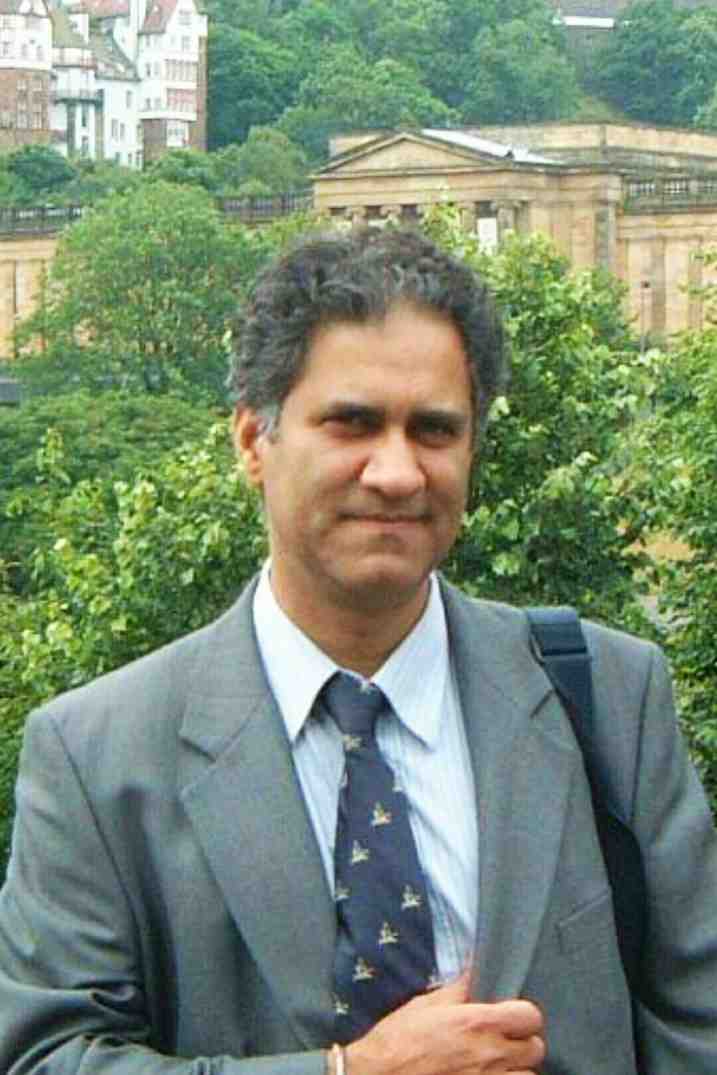
Dr.Tania Muñoz, My experience as researcher and author of a review article in The Journal Clinical Cardiology and Interventions has been very enriching and stimulating. The editorial team is excellent, performs its work with absolute responsibility and delivery. They are proactive, dynamic and receptive to all proposals. Supporting at all times the vast universe of authors who choose them as an option for publication. The team of review specialists, members of the editorial board, are brilliant professionals, with remarkable performance in medical research and scientific methodology. Together they form a frontline team that consolidates the JCCI as a magnificent option for the publication and review of high-level medical articles and broad collective interest. I am honored to be able to share my review article and open to receive all your comments.

“The peer review process of JPMHC is quick and effective. Authors are benefited by good and professional reviewers with huge experience in the field of psychology and mental health. The support from the editorial office is very professional. People to contact to are friendly and happy to help and assist any query authors might have. Quality of the Journal is scientific and publishes ground-breaking research on mental health that is useful for other professionals in the field”.
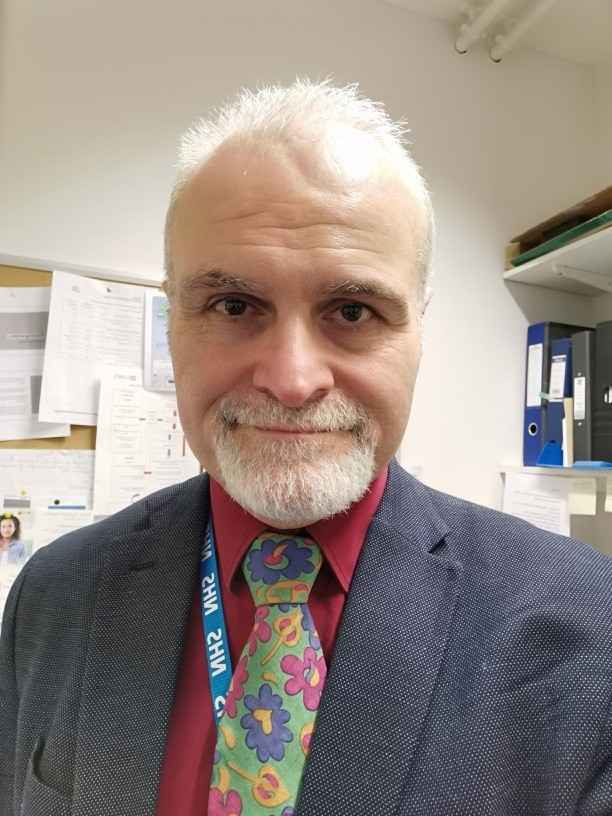
Dear editorial department: On behalf of our team, I hereby certify the reliability and superiority of the International Journal of Clinical Case Reports and Reviews in the peer review process, editorial support, and journal quality. Firstly, the peer review process of the International Journal of Clinical Case Reports and Reviews is rigorous, fair, transparent, fast, and of high quality. The editorial department invites experts from relevant fields as anonymous reviewers to review all submitted manuscripts. These experts have rich academic backgrounds and experience, and can accurately evaluate the academic quality, originality, and suitability of manuscripts. The editorial department is committed to ensuring the rigor of the peer review process, while also making every effort to ensure a fast review cycle to meet the needs of authors and the academic community. Secondly, the editorial team of the International Journal of Clinical Case Reports and Reviews is composed of a group of senior scholars and professionals with rich experience and professional knowledge in related fields. The editorial department is committed to assisting authors in improving their manuscripts, ensuring their academic accuracy, clarity, and completeness. Editors actively collaborate with authors, providing useful suggestions and feedback to promote the improvement and development of the manuscript. We believe that the support of the editorial department is one of the key factors in ensuring the quality of the journal. Finally, the International Journal of Clinical Case Reports and Reviews is renowned for its high- quality articles and strict academic standards. The editorial department is committed to publishing innovative and academically valuable research results to promote the development and progress of related fields. The International Journal of Clinical Case Reports and Reviews is reasonably priced and ensures excellent service and quality ratio, allowing authors to obtain high-level academic publishing opportunities in an affordable manner. I hereby solemnly declare that the International Journal of Clinical Case Reports and Reviews has a high level of credibility and superiority in terms of peer review process, editorial support, reasonable fees, and journal quality. Sincerely, Rui Tao.

Clinical Cardiology and Cardiovascular Interventions I testity the covering of the peer review process, support from the editorial office, and quality of the journal.

Clinical Cardiology and Cardiovascular Interventions, we deeply appreciate the interest shown in our work and its publication. It has been a true pleasure to collaborate with you. The peer review process, as well as the support provided by the editorial office, have been exceptional, and the quality of the journal is very high, which was a determining factor in our decision to publish with you.
The peer reviewers process is quick and effective, the supports from editorial office is excellent, the quality of journal is high. I would like to collabroate with Internatioanl journal of Clinical Case Reports and Reviews journal clinically in the future time.
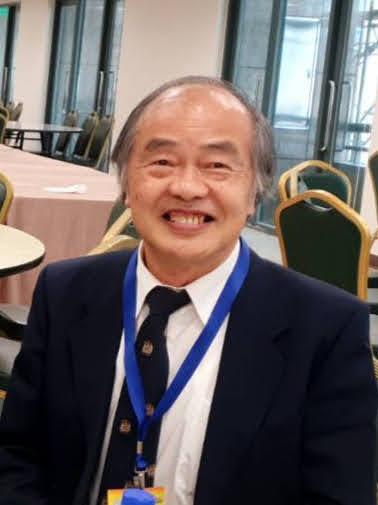
Clinical Cardiology and Cardiovascular Interventions, I would like to express my sincerest gratitude for the trust placed in our team for the publication in your journal. It has been a true pleasure to collaborate with you on this project. I am pleased to inform you that both the peer review process and the attention from the editorial coordination have been excellent. Your team has worked with dedication and professionalism to ensure that your publication meets the highest standards of quality. We are confident that this collaboration will result in mutual success, and we are eager to see the fruits of this shared effort.

Dear Dr. Jessica Magne, Editorial Coordinator 0f Clinical Cardiology and Cardiovascular Interventions, I hope this message finds you well. I want to express my utmost gratitude for your excellent work and for the dedication and speed in the publication process of my article titled "Navigating Innovation: Qualitative Insights on Using Technology for Health Education in Acute Coronary Syndrome Patients." I am very satisfied with the peer review process, the support from the editorial office, and the quality of the journal. I hope we can maintain our scientific relationship in the long term.
Dear Monica Gissare, - Editorial Coordinator of Nutrition and Food Processing. ¨My testimony with you is truly professional, with a positive response regarding the follow-up of the article and its review, you took into account my qualities and the importance of the topic¨.

Dear Dr. Jessica Magne, Editorial Coordinator 0f Clinical Cardiology and Cardiovascular Interventions, The review process for the article “The Handling of Anti-aggregants and Anticoagulants in the Oncologic Heart Patient Submitted to Surgery” was extremely rigorous and detailed. From the initial submission to the final acceptance, the editorial team at the “Journal of Clinical Cardiology and Cardiovascular Interventions” demonstrated a high level of professionalism and dedication. The reviewers provided constructive and detailed feedback, which was essential for improving the quality of our work. Communication was always clear and efficient, ensuring that all our questions were promptly addressed. The quality of the “Journal of Clinical Cardiology and Cardiovascular Interventions” is undeniable. It is a peer-reviewed, open-access publication dedicated exclusively to disseminating high-quality research in the field of clinical cardiology and cardiovascular interventions. The journal's impact factor is currently under evaluation, and it is indexed in reputable databases, which further reinforces its credibility and relevance in the scientific field. I highly recommend this journal to researchers looking for a reputable platform to publish their studies.

Dear Editorial Coordinator of the Journal of Nutrition and Food Processing! "I would like to thank the Journal of Nutrition and Food Processing for including and publishing my article. The peer review process was very quick, movement and precise. The Editorial Board has done an extremely conscientious job with much help, valuable comments and advices. I find the journal very valuable from a professional point of view, thank you very much for allowing me to be part of it and I would like to participate in the future!”

Dealing with The Journal of Neurology and Neurological Surgery was very smooth and comprehensive. The office staff took time to address my needs and the response from editors and the office was prompt and fair. I certainly hope to publish with this journal again.Their professionalism is apparent and more than satisfactory. Susan Weiner

My Testimonial Covering as fellowing: Lin-Show Chin. The peer reviewers process is quick and effective, the supports from editorial office is excellent, the quality of journal is high. I would like to collabroate with Internatioanl journal of Clinical Case Reports and Reviews.
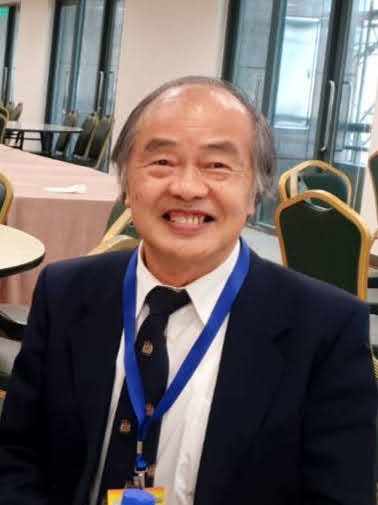
My experience publishing in Psychology and Mental Health Care was exceptional. The peer review process was rigorous and constructive, with reviewers providing valuable insights that helped enhance the quality of our work. The editorial team was highly supportive and responsive, making the submission process smooth and efficient. The journal's commitment to high standards and academic rigor makes it a respected platform for quality research. I am grateful for the opportunity to publish in such a reputable journal.
My experience publishing in International Journal of Clinical Case Reports and Reviews was exceptional. I Come forth to Provide a Testimonial Covering the Peer Review Process and the editorial office for the Professional and Impartial Evaluation of the Manuscript.
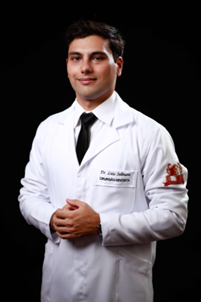
I would like to offer my testimony in the support. I have received through the peer review process and support the editorial office where they are to support young authors like me, encourage them to publish their work in your esteemed journals, and globalize and share knowledge globally. I really appreciate your journal, peer review, and editorial office.
Dear Agrippa Hilda- Editorial Coordinator of Journal of Neuroscience and Neurological Surgery, "The peer review process was very quick and of high quality, which can also be seen in the articles in the journal. The collaboration with the editorial office was very good."

I would like to express my sincere gratitude for the support and efficiency provided by the editorial office throughout the publication process of my article, “Delayed Vulvar Metastases from Rectal Carcinoma: A Case Report.” I greatly appreciate the assistance and guidance I received from your team, which made the entire process smooth and efficient. The peer review process was thorough and constructive, contributing to the overall quality of the final article. I am very grateful for the high level of professionalism and commitment shown by the editorial staff, and I look forward to maintaining a long-term collaboration with the International Journal of Clinical Case Reports and Reviews.
To Dear Erin Aust, I would like to express my heartfelt appreciation for the opportunity to have my work published in this esteemed journal. The entire publication process was smooth and well-organized, and I am extremely satisfied with the final result. The Editorial Team demonstrated the utmost professionalism, providing prompt and insightful feedback throughout the review process. Their clear communication and constructive suggestions were invaluable in enhancing my manuscript, and their meticulous attention to detail and dedication to quality are truly commendable. Additionally, the support from the Editorial Office was exceptional. From the initial submission to the final publication, I was guided through every step of the process with great care and professionalism. The team's responsiveness and assistance made the entire experience both easy and stress-free. I am also deeply impressed by the quality and reputation of the journal. It is an honor to have my research featured in such a respected publication, and I am confident that it will make a meaningful contribution to the field.

"I am grateful for the opportunity of contributing to [International Journal of Clinical Case Reports and Reviews] and for the rigorous review process that enhances the quality of research published in your esteemed journal. I sincerely appreciate the time and effort of your team who have dedicatedly helped me in improvising changes and modifying my manuscript. The insightful comments and constructive feedback provided have been invaluable in refining and strengthening my work".
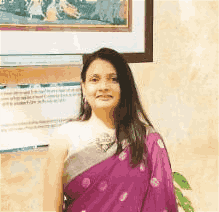
I thank the ‘Journal of Clinical Research and Reports’ for accepting this article for publication. This is a rigorously peer reviewed journal which is on all major global scientific data bases. I note the review process was prompt, thorough and professionally critical. It gave us an insight into a number of important scientific/statistical issues. The review prompted us to review the relevant literature again and look at the limitations of the study. The peer reviewers were open, clear in the instructions and the editorial team was very prompt in their communication. This journal certainly publishes quality research articles. I would recommend the journal for any future publications.

Dear Jessica Magne, with gratitude for the joint work. Fast process of receiving and processing the submitted scientific materials in “Clinical Cardiology and Cardiovascular Interventions”. High level of competence of the editors with clear and correct recommendations and ideas for enriching the article.

We found the peer review process quick and positive in its input. The support from the editorial officer has been very agile, always with the intention of improving the article and taking into account our subsequent corrections.
